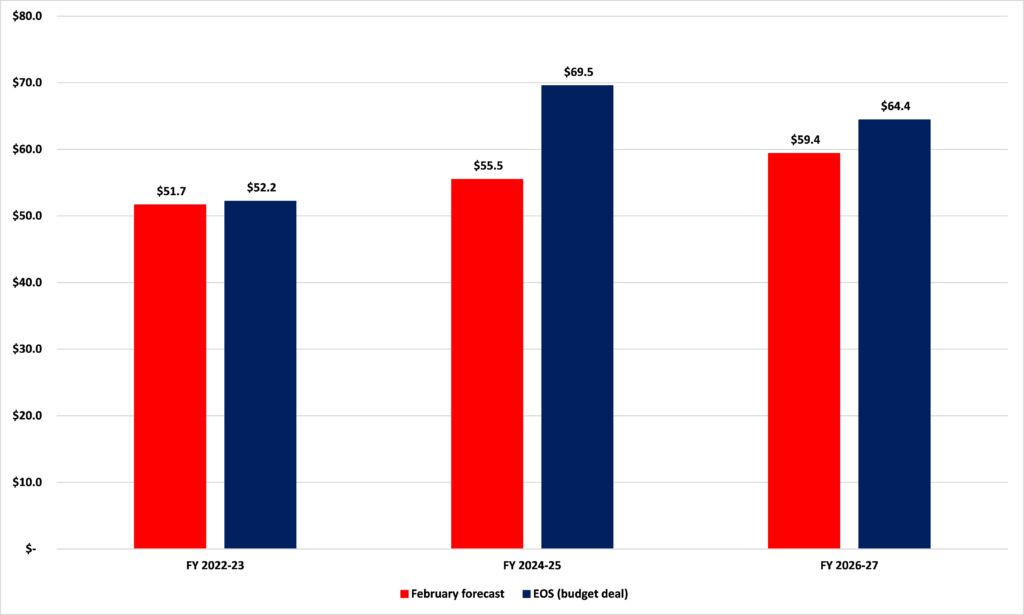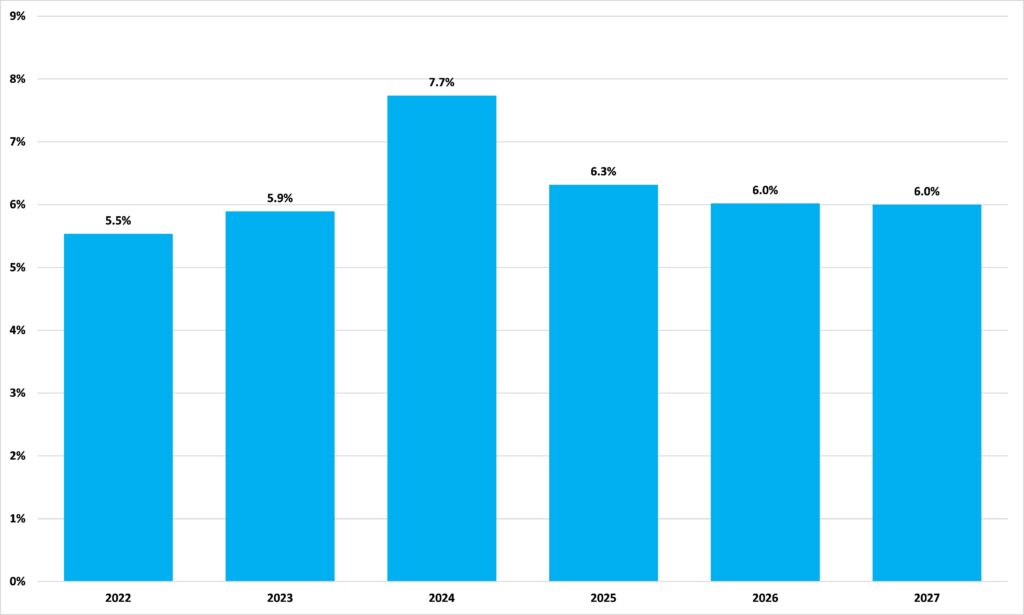State budget will grow government spending by 33% by 2027
Yesterday, the Minnesota legislature passed a new budget deal that will see the state government spend $69.5 billion (excluding inflation) in the 2024-2025 biennium. This is an increase of $14.0 billion — 25.3% — over the amount of money the state government was forecast to spend in that biennium in the February forecast, as Table 1 and Figure 1 show.
Table 1: Total Spending (billions)

Figure 1: Total Spending (billions)

The figure for 2024-2025 includes a lot of one-time spending, but, in nominal terms, in the 2026-2027 biennium, Minnesota’s state government spending will still be 23.4% higher than it was in the current biennium, 2022-2023. Indeed, Minnesota’s state government spending will be 32.7% higher in 2027 than it was in 2022.
Government spending is forecast to grow at a faster rate than Minnesota’s economy. Using the forecast for inflation and real Gross Domestic Product growth from the February forecast, we can see that, while government spending is forecast to be 17.0% higher in real, inflation-adjusted terms, in 2027 than it was in 2022, Minnesota’s economy is forecast to grow by just 7.9% in real terms over the same period.
As a result, the share of Minnesota’s economy accounted for by its government will grow from 5.5% in 2022 to 6.0% in 2027.
Figure 2: Total spending as a share of Gross Domestic Product

The Federal Reserve released its Economic Well-Being of U.S. Households in 2022 report this week. It found:
…a decline in peoples’ financial well-being over the previous year. The survey…found that self-reported financial well-being fell sharply and was among the lowest observed since 2016. Similarly, the share of adults who said that they spent less than their income in the month before the survey fell in 2022 from the prior year, while the share who said that their credit card debt increased rose. Among adults who were not retired, the survey also showed a decline in the share who felt that their retirement savings plan was on track, suggesting that individuals had concerns about their future financial security. The declines in financial wellbeing across these measures provide an indication of how families were affected by broader economic conditions in 2022, such as inflation and stock market declines.
The average Minnesotan is having his or her income squeezed hard and the taxes imposed to fund this spending bonanza will squeeze them still harder. That is not something the state government needs to worry about.